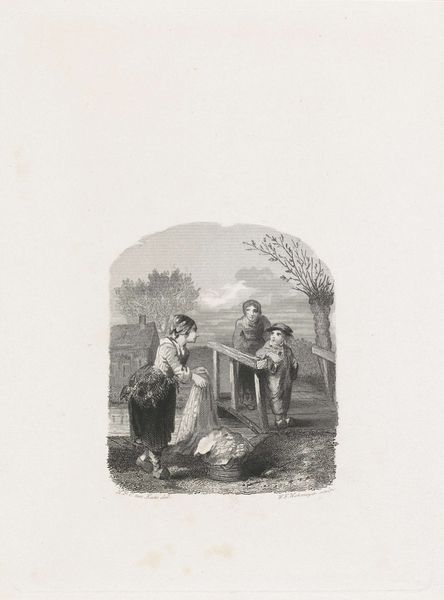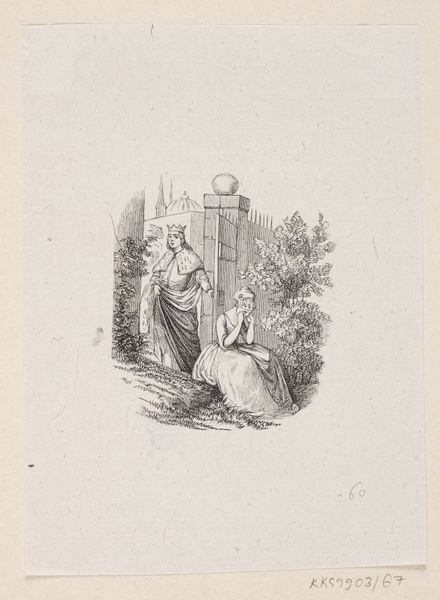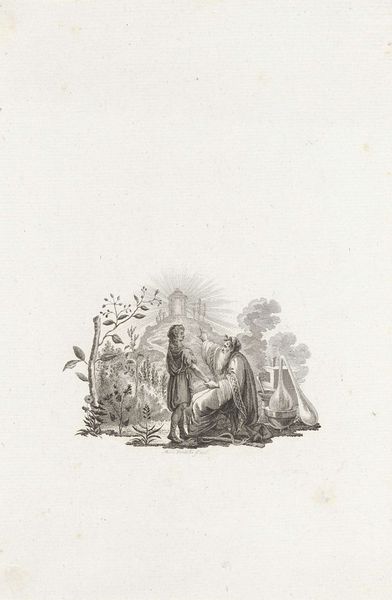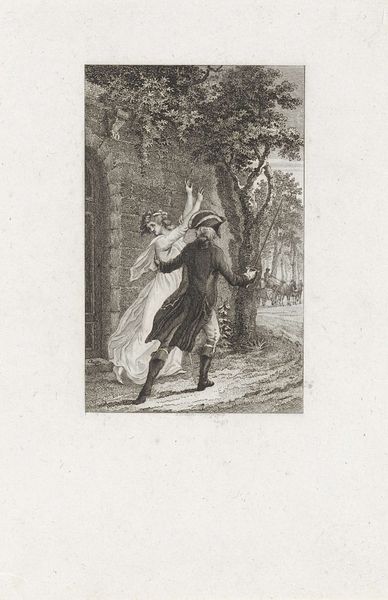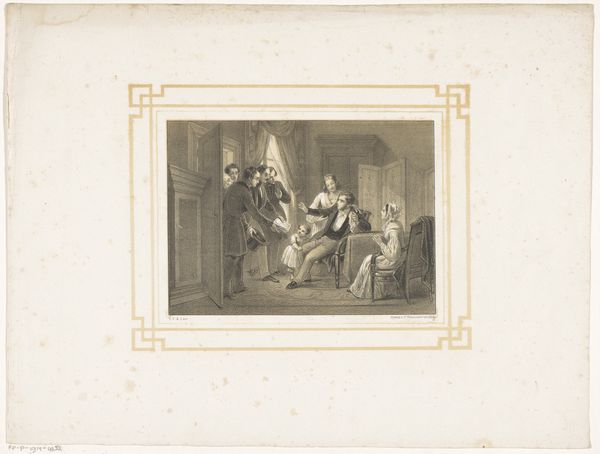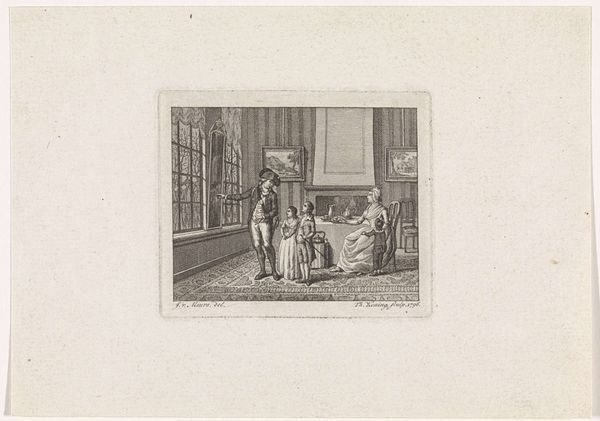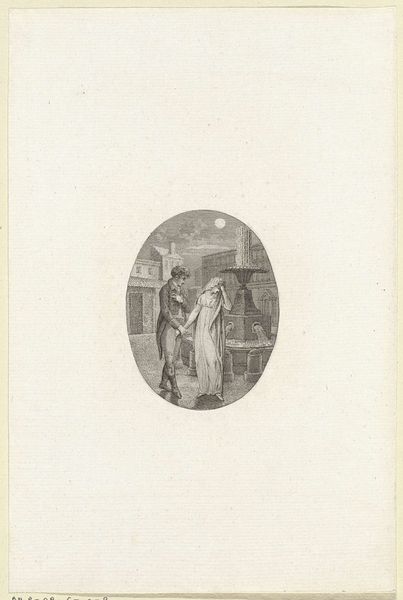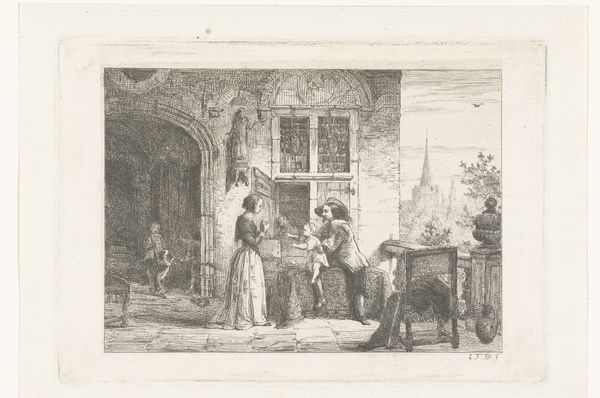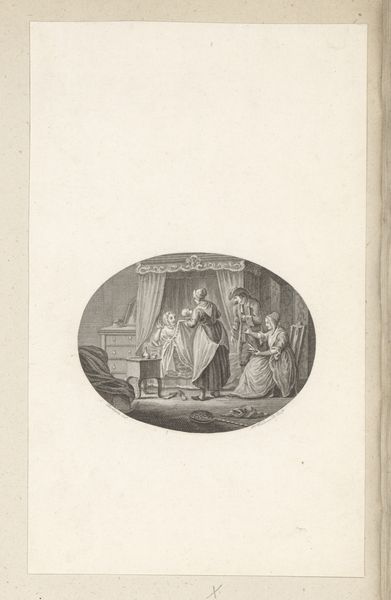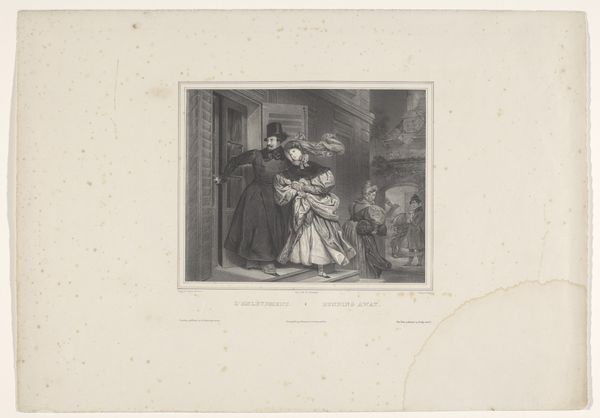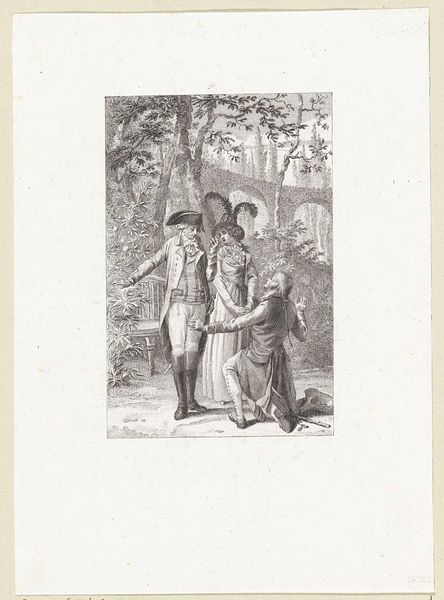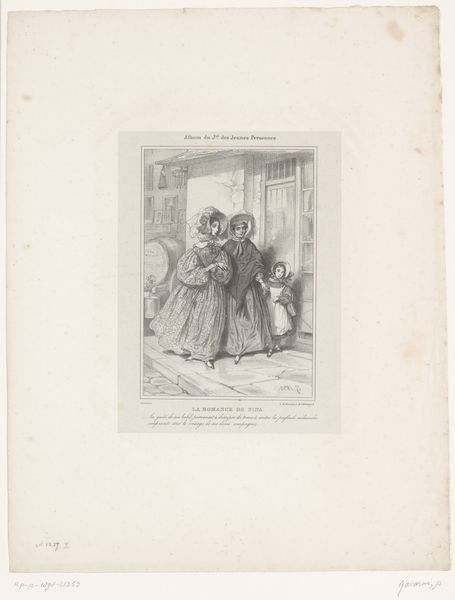
drawing, pen
#
portrait
#
drawing
#
garden
#
pencil sketch
#
landscape
#
pencil drawing
#
romanticism
#
pen
#
cityscape
#
genre-painting
Dimensions: height 232 mm, width 134 mm
Copyright: Rijks Museum: Open Domain
This print was made by Willem Frederik Wehmeyer, but the exact date is unknown. It's a lithograph – a process that democratized image-making in the 19th century. Lithography relies on the mutual repulsion of grease and water. The artist draws on a flat stone with a greasy crayon, then treats the surface so that ink adheres only to the drawn areas. The resulting prints could be produced in multiples, making imagery more widely accessible than ever before. Consider the implications of this new mode of production. "High art" could now circulate broadly, impacting public taste and visual culture. In this print, we see a scene of bourgeois life, carefully rendered to appeal to a growing middle class. The artist has skillfully captured the textures of clothing and the nuances of expression. In short, lithography embodies the spirit of its time, reflecting changing social structures and the rise of consumer culture. Understanding its material basis helps us see this image not just as a pretty picture, but as a product of its era.
Comments
No comments
Be the first to comment and join the conversation on the ultimate creative platform.

